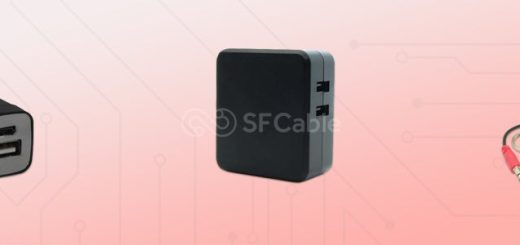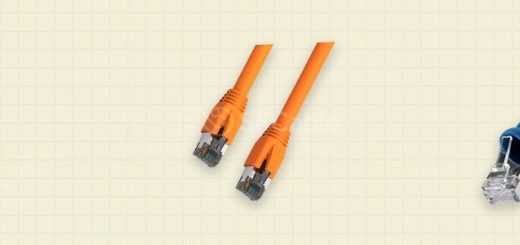Cable Management at the Workplace: Benefits and Best Practices
Introduction
A single messy cable can trigger a chain reaction. One power cord hangs over the floor, and another wraps around a desk leg. Before long, the work area is covered in cables, complicated to clean, and more difficult to organize.
This disorganization slows down access and raises risk in high-activity settings, such as gaming stations, network centers, or fast-paced offices. Loose cables are not only messy but also a hazard. That’s where smart cable management comes in.
With the proper cable management techniques and planning, organizations can decrease downtime and increase workspace effectiveness.
Organized cable and wire management also enables long-term maintenance and neater desk cable management for each workstation.
The Importance of Effective Cable Management
Safety Considerations
Unmanaged cables can rapidly become a problem. They are a tripping hazard in aisles and near desks, and a toe or foot caught in a loose wire can damage costly equipment.
Tangled or exposed cords can lead to overheating or short circuits. Cable management prevents these and keeps the workspace safer for everyone.
Operational Efficiency
Organized cables make devices more accessible and maintainable. There is no need to follow wires each time a repair is needed. This saves time on downtime during maintenance or upgrades.
It also enables IT teams to work quicker with fewer misunderstandings. Labeling and routing cable management tips save minutes each day.
Aesthetic Appeal
A messy arrangement is unprofessional, though all may function optimally. Wires tangled under desks or in the back of screens are distracting and dusty. Organized cable runs enhance workstations’ general appearance.
Tidy wire and cable management is a sign of detailed care in a gaming station or a corporate office. It makes the workspace more organized and concentrated.
Compliance and Standards
There are specific safety and fire codes that most industries adhere to. Bad cable configurations can result in failed inspections or penalties. Clean wiring makes it easier to meet those standards.
Proper desk cable management also promotes improved airflow and equipment performance. It’s an easy step that safeguards both humans and systems.
Common Cable Management Challenges
1. Under-Desk Cable Clutter
Loosely hanging cables under desks collect dust and interfere with footrests or chairs. This not only gives a dirty look but also complicates cleaning. In workspaces such as gaming setups or network closets, it also prevents air circulation.
Interconnected cords may get damaged or easily pulled out. Organizing cables under the desk avoids problems and ensures a clean workspace.
2. Overloaded Power Strips
Overloading a strip by plugging too many appliances into a single outlet overheats the strip or leads to electrical faults. This is prevalent in offices with several screens, routers, or servers. Such a configuration not only damages devices but can also initiate outages.
Most users disregard the load capacity printed on power strips. Balanced cable and wire management ensures safe power distribution.
3. Inadequate Labeling
Unlabeled cables complicate determining connections while repairing. This makes repairs slow and increases the likelihood of unplugging the wrong device. In data centers or technologically equipped configurations, this results in downtime.
Even mundane devices such as printers or monitors are impacted. Labeling is one of the simplest but most neglected cable management hacks.
4. Temporary Solutions Becoming Permanent
Workarounds such as wiring taped to or pushed against furniture tend to remain for longer than intended. Eventually, they become hard to adjust or remove. Ad hoc setups also put cables under strain, causing wear and tear or damage.
Such a method is inflexible when adding new equipment. Good cable management concepts work around long-term solutions that have the potential to evolve with time.
5. Poor Routing Choices
Cabling over pathways or over office workstations elevates trip hazards and cable wear. It also creates the appearance of disorganization. Unguided wires tend to become kinked, yanked, or trampled, deteriorating the cable and the device. Effective computer cable management demands consideration of cable routes in advance.
6. Ignoring Heat and Airflow
Bundling cables tightly or obstructing vents can increase the heat surrounding devices. This lessens equipment performance and longevity. It’s a concealed problem in configurations with several screens, servers, or gaming consoles. The cable organization at the desk also keeps air flowing. Cable management at the desk should always consider heat management.
Best Practices for Cable Management
1. Plan Before You Plug
Start by looking around and checking your workspace layout. Count how many devices need power, data, or audio connections. Consider where cables need to go and in which areas they’ll be a hindrance.
The essence of laying out this plan will be good for keeping the cable untangled from clutter and wasting time later. A few minutes of planning how you want the cable to run around the desk will save you numerous hours of frustration.
2. Choose the Right Materials
Not all cable accessories are equal. Use ties, clips, sleeving, and other cable management kits that are good enough to withstand daily use. Poor-quality materials will snap or fail at just a touch of use, increasing this mess.
Quality products maintain a safe and stable system. Strong cable management starts with strong materials.
3. Keep It Labeled
Always label both ends of your cables. This is especially important in setups with many similar-looking wires. Clear labels save time when troubleshooting, upgrading, or relocating equipment. This is one of the simplest cable management tips you should follow. Plus, it ensures that maintenance at a later time is much easier.
4. Use Smart Routing
Keep the cables close to a surface or routed through cable trays. Never let cables dangle loosely or trail off in open space. Use sleeves or channels to bundle and shield cords, improving safety and enhancing airflow, especially in computer cable management. Clean routing makes it easier to clean and maintain the space, too.
5. Schedule Routine Checks
Cable setups, once at their best organized, tend to become dirty over the years of use. Devices get shifted, rigging gets added, and whatever stays changed. Place a reminder to check and clean up every so often. This keeps things running efficiently and safe while generating later detection of damaged or obsolete components.
6. Adapt for Growth
Plan for the future. New equipment or expanded setups can grossly undercut a tight cable layout. Good cable management ideas will be flexible and grow with your needs. Modular trays or adjustable organizers are part of this. Planning for tomorrow stops you from tearing things down later.
Tools and Accessories for Effective Cable Management
1. Cable Trays and Raceways
Cable trays and raceways neatly route cables along walls, ceilings, or under desks. They keep the wires away from the floor, thus reducing the chances of tangling or damage. Such a setup is ideal for data centres or workplaces with high cable volumes. The raceways even hide the cables, scaling up the interest of safety and look. They allow expansions or changes without any reference to the previous setup.
2. Cable Ties and Velcro Straps
Those cable ties and velcro straps are so basic and yet powerful when bundling cables. Cable ties are versatile in their rugged grip, suitable for fixed installations. On the other hand, Velcro strap gives the temporary or adjustable option, plus they allow for reuse. It keeps loose cords from spreading all over the floor or desk. Proper bundling helps maintain enforced airflow and huge maintenance.
3. Cable Sleeves and Covers
Cable sleeves are used to coalesce multiple wires into one neat bundle. This helps to reduce clutter and also protects cables from wear and dust. Cover covers offer additional protection for wires that have to be in areas prone to foot traffic. They are helpful in office walkways or under desks with high foot traffic. These also work towards better computer cable management in exposed setups.
4. Labeling Tools
Label makers and cable tags tell what wire is connected to what. This is important in networks where there are many similar kinds of cables. Clear labels on both ends help reduce guesswork and downtime. They also make replacements and upgrades faster and safer. These tools are a must-have in any cable and wire management setup.
Benefits Realized from Proper Cable Management
1. Enhanced Safety
Cable clutter creates tripping hazards in business establishments, while the damage to cables poses risks of electrocution or fire.
2. Improved Productivity
Getting a problem identified and fixed in organized cables is quicker. Fixing issues takes less time, not tracking down the right connection.
3. Lower Maintenance Costs
Well-managed cables hardly bend or get frayed and damaged. Longer warranty promises maintain a yardstick for purchasing replacements.
4. Professional Appearance
Clean cable arrangement presents a clea,n organized culture in the workplace. A place, be it a gaming room or an office, creates a strong first impression for those who walk in.
5. Easier Equipment Upgrades
With clear cable paths and labels, hardware installation or replacement becomes faster and simpler, minimizing disruptions during upgrades or changes.
6. Better Airflow and Device Performance
Cluttered cables obstruct air circulation around hardware, especially in server rooms or tighter spaces. Proper cable and wire management keeps the devices cool and functioning reliably.
Conclusion
Cables often remain unnoticed until they give trouble. Tripping over a wire or unplugging incorrectly is sufficient to appreciate a good cable management setup. A neat setup safeguards equipment, saves time, and smoothens every step in the process.
The benefits are thus clear, from faster maintenance to safe walking paths. These simple cable management tips will work wonders for a space in terms of looks and functionality. From desk cable management for a tiny office, small changes go a long way in computer cable management for a full-blown data center.
It is high time to assess your current setup and start looking into cable management ideas that complement your space and improve operation.
FAQs
Why is cable management important?
Cable management helps keep the workspace safe, clean, and easy to work in. It reduces tripping hazards, protects equipment, and saves time during maintenance.
How to do cable management?
Start by grouping related cables together and keeping them off the floor. Use tools like clips, sleeves, or trays to guide and hold them in place.
How to manage computer cables?
Label each cord so you know what it’s connected to. Use ties or Velcro straps to bundle extra length and avoid tangles.
How to improve cable management?
Review your current setup and remove any unused or damaged cables. Add simple cable holders or trays to create a cleaner layout.
How to manage cables on a desk?
Use desk clamps or cable clips to keep cords from slipping off. Route them neatly behind or under the desk to stay out of sight.
What to use for cable management?
You can use cable ties, sleeves, clips, trays, or Velcro straps. Each tool helps you keep wires secure and in place.
Where to buy cable management supplies?
Cable management supplies are available from hardware stores or trusted online retailers. SF Cable offers a wide range of reliable cable and wire management solutions.


